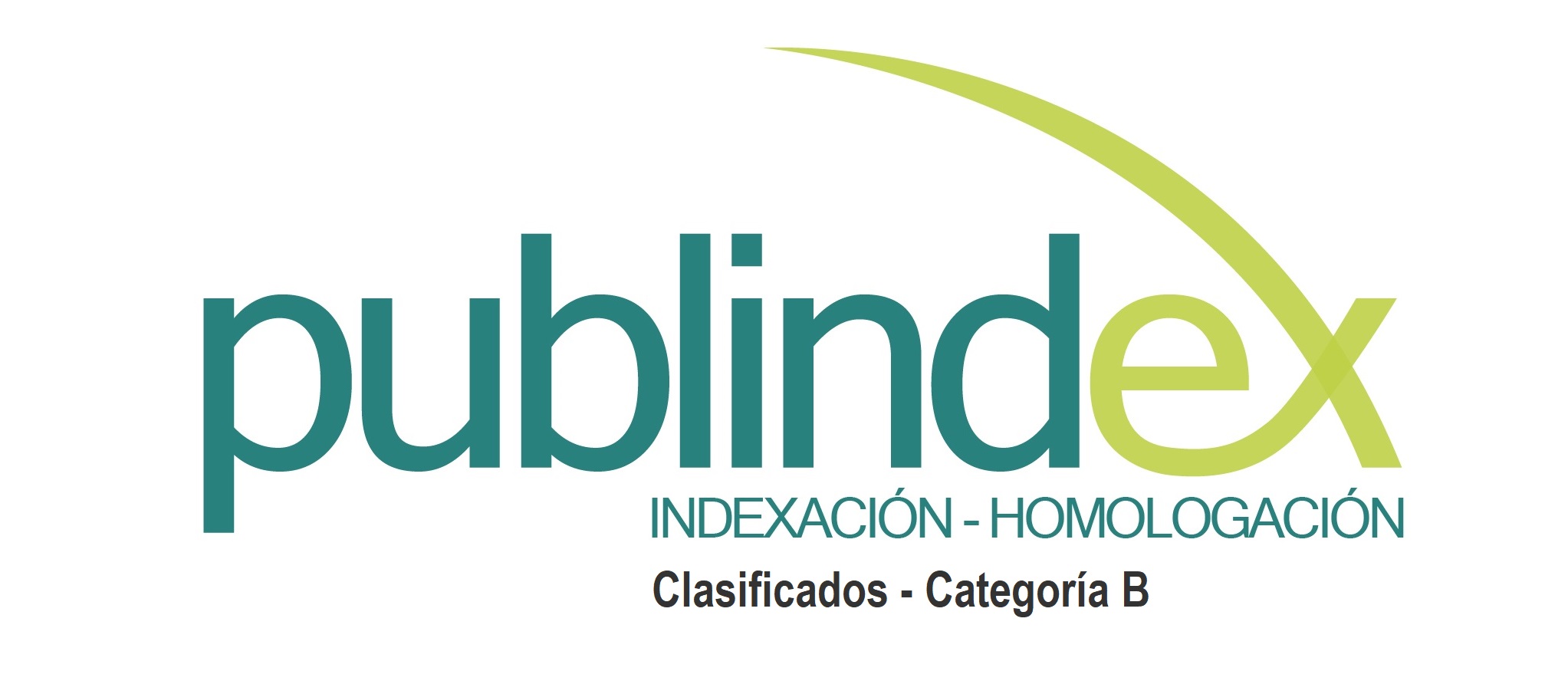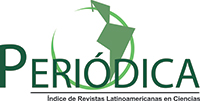Characterization of rigid polyurethane foam waste as a tool to evaluate its use
DOI:
https://doi.org/10.14482/inde.43.02.245.125Keywords:
Characterization techniques, industrial waste, rigid polyurethane foam waste, waste reuseAbstract
This work presents the physical, chemical, structural and environmental characterization of rigid polyurethane foam (PUR) waste, from different industries in the region. Four samples were selected for the study, which includes density, water absorption, and chemical composition through elemental analysis and X-ray spectroscopy (EDX). In addition, its structural composition was analyzed through the techniques of Fourier Transform Infrared spectroscopy (FTIR), Differential Thermogravimetry Analysis (DTG), Confocal microscopy and Scanning Electron Microscopy (SEM). Environmental tests such as Toxicity characteristic leaching procedure (TCLP) and acute toxicity in Daphnia Pulex were also applied. The results showed the presence of the usual functional groups in the composition of a rigid polyurethane foam; however Cl, Ti and benzene rings was found, which correspond to the presence of additives. Furthermore, through the applied environmental tests, non-toxicity was found in the samples. Subsequent studies of gas emissions from these wastes are recommended when they are subjected to thermal processes.
References
«Mercado de Poliuretano en América Latina, Tamaño, Cuota, 2024-2032», EMR ACLAIGHT Enterprise. Accedido: 13 de febrero de 2024. [En línea]. Disponible en: https://www.informesdeexpertos.com/informes/mercado-de-poliuretano-en-america-latina
M. G. Acevedo y M. L. R. Vázquez, «Caracterización de la espuma rígida de poliuretano expandido como impermeabilizante de cubiertas.», Revista de Arquitectura e Ingeniería, vol. 10, n.o 2, pp. 1-12, 2016.
N. Gama, A. Ferreira, y A. Barros-Timmons, «Polyurethane Foams: Past, Present, and Future», Materials, vol. 11, n.o 10, p. 1841, sep. 2018, doi: 10.3390/ma11101841.
M. Kazemi, S. Faisal Kabir, y E. H. Fini, «State of the art in recycling waste thermoplastics and thermosets and their applications in construction», Resources, Conservation and Recycling, vol. 174, p. 105776, nov. 2021, doi: 10.1016/j.resconrec.2021.105776.
D. F. Victoria Castillo, «Recolección de residuos de PUR por parte de la empresa R.H», 10 de junio de 2022.
R. Gómez-Rojo, L. Alameda, Á. Rodríguez, V. Calderón, y S. Gutiérrez-González, «Characterization of Polyurethane Foam Waste for Reuse in Eco-Efficient Building Materials», Polymers, vol. 11, n.o 2, p. 359, feb. 2019, doi: 10.3390/polym11020359.
L. A. Cuenca-Romero, R. Arroyo, Á. Alonso, S. Gutiérrez-González, y V. Calderón, «Characterization properties and fire behaviour of cement blocks with recycled polyurethane roof wastes», Journal of Building Engineering, vol. 50, p. 104075, jun. 2022, doi: 10.1016/j.jobe.2022.104075.
M. Kismi, P. Poullain, y P. Mounanga, «Transient Thermal Response of Lightweight Cementitious Composites Made with Polyurethane Foam Waste», Int J Thermophys, vol. 33, n.o 7, pp. 1239-1258, jul. 2012, doi: 10.1007/s10765-012-1244-7.
V. Václavík et al., «Recycling Polyurethane Foam and its Use as Filler in Renovation Mortar with Thermal Insulating Effect», en Industrial and Technological Applications of Transport in Porous Materials, vol. 36, J. M. P. Q. Delgado, Ed., en Advanced Structured Materials, vol. 36. , Berlin, Heidelberg: Springer Berlin Heidelberg, 2013, pp. 141-170. doi: 10.1007/978-3-642-37469-2_6.
J. Sternberg, O. Sequerth, y S. Pilla, «Structure-property relationships in flexible and rigid lignin-derived polyurethane foams: A review», Materials Today Sustainability, p. 100643, dic. 2023, doi: 10.1016/j.mtsust.2023.100643.
I. Santamaría Vicario, L. Alameda Cuenca-Romero, S. Gutiérrez González, V. Calderón Carpintero, y Á. Rodríguez Saiz, «Design and Characterization of Gypsum Mortars Dosed with Polyurethane Foam Waste PFW», Materials, vol. 13, n.o 7, p. 1497, mar. 2020, doi: 10.3390/ma13071497.
R. Briones-Llorente, R. Barbosa, M. Almeida, E. A. Montero García, y Á. Rodríguez Saiz, «Ecological Design of New Efficient Energy-Performance Construction Materials with Rigid Polyurethane Foam Waste», Polymers, vol. 12, n.o 5, p. 1048, may 2020, doi: 10.3390/polym12051048.
C. Junco Petrement, «Morteros aligerados con residuos de espumas rígidas de poliuretano: obtención, caracterización y puesta en obra», Universidad de Burgos, 2012. doi: 10.36443/10259/209.
B. Czupry?ski, J. Paciorek?Sadowska, y J. Liszkowska, «Modifications of the rigid polyurethane–polyisocyanurate foams», J of Applied Polymer Sci, vol. 100, n.o 3, pp. 2020-2029, may 2006, doi: 10.1002/app.22604.
M. Modesti, A. Lorenzetti, y S. Besco, «Influence of nanofillers on thermal insulating properties of polyurethane nanocomposites foams», Polymer Engineering & Sci, vol. 47, n.o 9, pp. 1351-1358, sep. 2007, doi: 10.1002/pen.20819.
W. Fan, Q. Gao, J. Xiang, J. Yan, Y. Chen, y H. Fan, «Synergistic effect of silica aerogel and titanium dioxide in porous polyurethane composite coating with enhanced passive radiative cooling performance», Progress in Organic Coatings, vol. 183, p. 107763, oct. 2023, doi: 10.1016/j.porgcoat.2023.107763.
P. Bartczak et al., «Closed-cell polyurethane spray foam obtained with novel TiO2–ZnO hybrid fillers – mechanical, insulating properties and microbial purity», Journal of Building Engineering, vol. 65, p. 105760, abr. 2023, doi: 10.1016/j.jobe.2022.105760.
C. Sun et al., «In-situ construction of particle-accumulated hydrophobic packing layer from rigid polyurethane wastes for gas pre-dehydration», Colloids and Surfaces A: Physicochemical and Engineering Aspects, vol. 643, p. 128694, jun. 2022, doi: 10.1016/j.colsurfa.2022.128694.
P. Mondragón Cortez, Principios y aplicaciones de la espectroscopia de infrarrojo en el analisis de alimentos y bebidas, Primera. Jalisco, Mexico, 2020. [En línea]. Disponible en: chrome-extension://efaidnbmnnnibpcajpcglclefindmkaj/https://ciatej.mx/files/divulgacion/divulgacion_5f89fd7801268.pdf
L. Jiao, H. Xiao, Q. Wang, y J. Sun, «Thermal degradation characteristics of rigid polyurethane foam and the volatile products analysis with TG-FTIR-MS», Polymer Degradation and Stability, vol. 98, n.o 12, pp. 2687-2696, dic. 2013, doi: 10.1016/j.polymdegradstab.2013.09.032.
J. Li, H. Zhu, D. Fang, X. Huang, C. Zhang, y Y. Luo, «Mechanochemistry recycling of polyurethane foam using urethane exchange reaction», Journal of Environmental Chemical Engineering, vol. 11, n.o 3, p. 110269, jun. 2023, doi: 10.1016/j.jece.2023.110269.
Q. Gong, L. Qin, y N. Wang, «Combining hyperbranched polyol containing three flame retardant elements, P, N and Si, with expanded graphite to improve the flame retardancy of bio-based rigid polyurethane foam», European Polymer Journal, vol. 196, p. 112307, sep. 2023, doi: 10.1016/j.eurpolymj.2023.112307.
A. Zubizarreta Solá et al., «Revisión de la literatura sobre efectos nocivos de la exposición laboral a hidrocarburos en trabajadores en ambiente externo», Medicina y Seguridad del Trabajo, vol. 64, n.o 252, pp. 271-294, sep. 2018.
R. H. Cooke et al., «Polyurethane polymers cured via azide-alkyne cycloaddition», Progress in Organic Coatings, vol. 151, p. 106047, feb. 2021, doi: 10.1016/j.porgcoat.2020.106047.
A. A. Alzahrani et al., «Fully recoverable rigid shape memory foam based on copper-catalyzed azide–alkyne cycloaddition (CuAAC) using a salt leaching technique», Polym. Chem., vol. 9, n.o 1, pp. 121-130, dic. 2017, doi: 10.1039/C7PY01121K.
A. M. Borreguero et al., «A novel click-chemistry approach to flame retardant polyurethanes», Reactive and Functional Polymers, vol. 73, n.o 9, pp. 1207-1212, sep. 2013, doi: 10.1016/j.reactfunctpolym.2013.06.003.
Y. Ding et al., «Characterization of pyrolysis behavior for rigid polyurethane foam wastes with different densities through TGA-FTIR-DSC-MCC and Hill Climbing Optimization methods», Journal of Analytical and Applied Pyrolysis, vol. 177, p. 106326, ene. 2024, doi: 10.1016/j.jaap.2023.106326.
S. Gutiérrez-González, J. Gadea, A. Rodríguez, C. Junco, y V. Calderón, «Lightweight plaster materials with enhanced thermal properties made with polyurethane foam wastes», Construction and Building Materials, vol. 28, n.o 1, pp. 653-658, mar. 2012, doi: 10.1016/j.conbuildmat.2011.10.055.
H. Stan?in et al., «Thermogravimetric and kinetic analysis of biomass and polyurethane foam mixtures Co-Pyrolysis», Energy, vol. 237, p. 121592, dic. 2021, doi: 10.1016/j.energy.2021.121592.
Z. Yao et al., «Probing the combustion and pyrolysis behaviors of polyurethane foam from waste refrigerators», J Therm Anal Calorim, vol. 141, n.o 3, pp. 1137-1148, ago. 2020, doi: 10.1007/s10973-019-09086-8.
K. Pielichowski, K. Kulesza, y E. M. Pearce, «Thermal degradation studies on rigid polyurethane foams blown with pentane», J of Applied Polymer Sci, vol. 88, n.o 9, pp. 2319-2330, may 2003, doi: 10.1002/app.11982.
P.-H. Lin, C.-H. Ko, F.-C. Chang, S.-H. Tu, y C.-J. Lin, «Oxidation behavior and decomposition kinetics of mixed-waste biomass material», BioRes, vol. 18, n.o 1, pp. 778-791, nov. 2022, doi: 10.15376/biores.18.1.778-791.
D.-A. ?erban y E. Linul, «Fatigue behaviour of closed-cell polyurethane rigid foams», Engineering Failure Analysis, vol. 154, p. 107728, dic. 2023, doi: 10.1016/j.engfailanal.2023.107728.
C. Yang, Z.-H. Zhuang, y Z.-G. Yang, «Pulverized polyurethane foam particles reinforced rigid polyurethane foam and phenolic foam», J. Appl. Polym. Sci., vol. 131, n.o 1, p. n/a-n/a, ene. 2014, doi: 10.1002/app.39734.
P. Mounanga, W. Gbongbon, P. Poullain, y P. Turcry, «Proportioning and characterization of lightweight concrete mixtures made with rigid polyurethane foam wastes», Cement and Concrete Composites, vol. 30, n.o 9, pp. 806-814, oct. 2008, doi: 10.1016/j.cemconcomp.2008.06.007.
O. US EPA, «SW-846 Test Method 1311: Toxicity Characteristic Leaching Procedure». Accedido: 6 de junio de 2022. [En línea]. Disponible en: https://www.epa.gov/hw-sw846/sw-846-test-method-1311-toxicity-characteristic-leaching-procedure
Z. Xu, J. Zhan, Z. Xu, y X. Mu, «Analysis of the pyrolysis process of ionic liquid-based flame retardant rigid polyurethane foam», Journal of Industrial and Engineering Chemistry, nov. 2023, doi: 10.1016/j.jiec.2023.11.018.
Downloads
Published
How to Cite
Issue
Section
License
Copyright (c) 2025 Revista Científica Ingeniería y Desarrollo.

This work is licensed under a Creative Commons Attribution-NonCommercial 4.0 International License.









